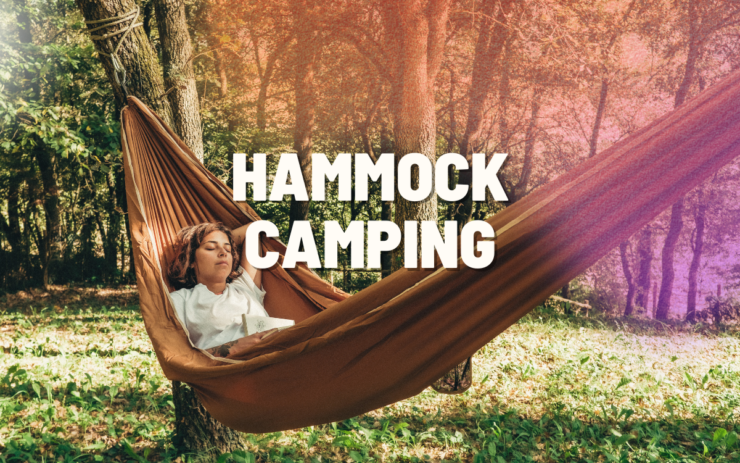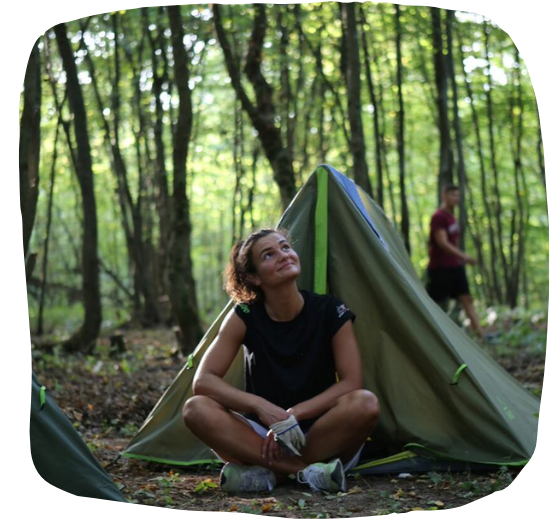Whether you are camping in a tent or hammock there are some things you can do to keep yourself safe. There will always be inherent risks involved with camping but we can do our best to minimize those.
There are some things that you can do to ensure your safety that are specifically designed for hammock camping. My list of safety tips has tips for camping in general and tips for specifically camping in a hammock.
Here are my 16 tips for staying safe when hammock camping. These tips are listed in no particular order.
Contents
1. First Aid Kit

Anytime you go camping you should bring a first aid kit. This is true whether you are right outside your car or are in a tent deep in the woods. I suggest that you bring a first aid kit that is specifically made for camping, these usually have extra equipment that would be useful in camping situation such as waterproof matches.
Not only is having a first aid kit crucial but knowing how to use the items in it is just as important. If you do not know how to use any first aid equipment take the time to learn, it’s not too hard.
I also really advise that you make sure that your first aid kit has a reflective blanket. I’ve had to use this before and it really came in handy.
2. Inspect Your Gear
Make sure you inspect your gear every so often. It’s probably helpful to take a quick look after every use. You definitely want to take a look at your gear if you think you’ve heard a tear or felt something weird.
When looking at the hammock itself, you want to make sure that you inspect the stitching. most hammocks are triple stitched and if one layer of stitching has started to come off you should probably replace the hammock.
I have yet to see a carabiner that has been worn down enough to need to be replaced from hammocking but it could happen. When I use carabiners for other sports I replace them if they have been worn down by 1/4 of its width.
Also, make sure you inspect your suspension every so often. Again, you want to be looking at the stitching especially if your suspension uses loops.
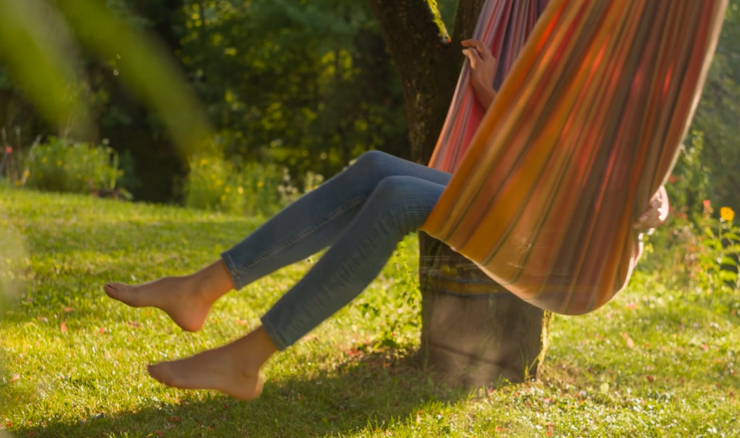
3. Stay Dry
Whenever you’re camping staying dry is super important. If you don’t stay dry you can easily get very cold and slip into hypothermia. This is not something that you want to happen to you. Ever.
There may be situations in which you have to get wet or you choose to and this is okay. You should make sure that you are prepared to get dry after these situations and only get wet when it’s safe to do so.
To stay dry you should bring an extra set of clothing in a waterproof bag along with a rain jacket. Dry bags are a great option and I advocate that you pick some up.
You should also set up a hammock fly or tarp to keep the water off of you overnight. This water isn’t always from the rain. Sometimes it’s from the morning dew. It is okay for your hammock to get wet, but you want to dry them our quickly.
4. Where You Choose To Hang
Hanging over something dangerous might seem like an adventurous idea but if safety is your main priority then I would suggest you hang somewhere safe. Safety should always be your main priority too.
Hanging over things like rocks, or hanging at insane heights isn’t recommended and could easily go wrong. Water is also a bad option especially if you’re planning on sleeping.
Most of my hammocks also have a tag recommending that you do not hang over 18 inches high. Check my post on hanging your hammock at Heights for more information on that.
5. Layers

Along with dry clothes, you should make sure that you bring a set of warm clothes. If you’re going camping in the winter you might want to make sure that you have a winter jacket, a sweater, and a t-shirt.
The actual temperature is not the only thing you need to worry about. You also need to keep in mind that your body temperature will rise as you are being physically active so there may be times when you are wearing only your T-shirt to cool down.
If you do feel too warm be careful. Exposed skin can be frostbitten even if you personally don’t feel cold.
6. Communication
Make sure you have a means of communication in case of an emergency. You want to be able to get a hold of the First Responders as fast as you can if you need to.
Some examples of communication devices are; cell phones, radios, satellite phones, flares, and whistles. If you know that somebody is looking for you-you might also be able to get their attention using smoke from your fire.
Whatever you choose to bring, make sure that you know for a fact that it will work in the location that you’re in. I’ve have brought satellite phones at times because we knew that nothing else would be able to get a signal.
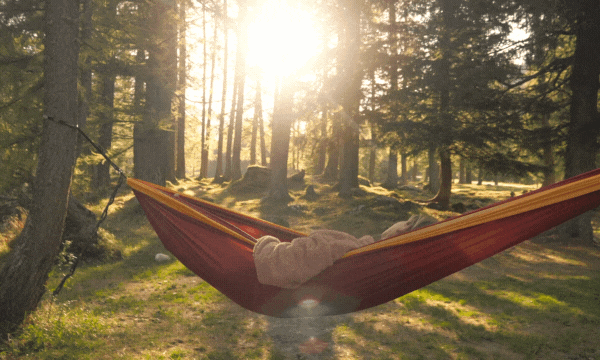
7. Transfer Your Weight Carefully
After you set up your hammock you should get into it very carefully just to make sure that everything is working properly. This means that you should sit down in it before you lie down and be stationary before you swing about.
You want to make sure that you sit before you lay down because you don’t want to be in a situation in which your head is in danger of hitting the ground. Usually, when a hammock fails it is within a few seconds of it taking on weight for the first time after being set up.
This happened to me the other day when my natural stick toggle was not strong enough to hold the Marlin spike hitch even though my continuous loop was on the knot.
8. Food and Water
Never go camping with the intention of finding food in the woods without having a backup plan that will 100% work. This is true for water as well. Being properly hydrated is one of the number one issues that people are faced with if they got lost in the woods
Also, make sure that what you’re eating and drinking is safe. If you don’t know what it is do not eat or drink it. You also should not drink any water found in nature without properly treating it first. You can do this by boiling it but I like to just use purification tablets in my water bottle.
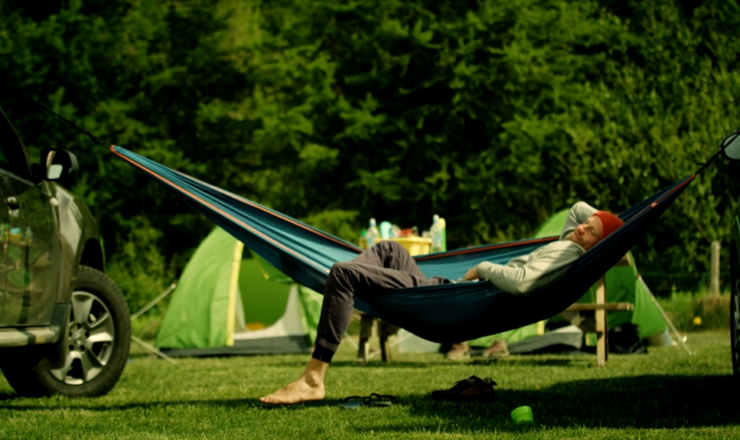
9. Weather
Always check the weather so that you can be properly prepared when you go camping. Even if the forecast says that the weather should be nice there is always a chance that it could go south quickly.
as I mentioned earlier, I suggest that you always bring a raincoat, and always pack clothes in a waterproof bag. I also always recommend bringing your fly or tarp and setting it up early.
Rain isn’t the only thing you need to worry about when you’re looking at the weather forecast. You may want to look into the wind speed and just overall temperature among other things
10. Tell Someone Where You Are Going
First of all, we think that you should always go camping with a buddy, usually, this makes the time more enjoyable too. Some people do like camping alone though, And that’s fine as long as they’re taking the proper precautions.
Whether you’re camping alone, with a buddy, or with a bunch of people, you should always let somebody at home know where you are going, and when you expect to be back.
Even just a general idea of where you’re going to be is helpful in case search and rescue need to find you for whatever reason. If Emergency crews have a good idea of where you are it makes the chances of finding you much much better
11. Avoid Wild Animals
Not long ago, I made a post talking about insects bears and other animals. In that post, I gave some tips for keeping animals away from your campsite. Here’s a quick little summary of what I said but feel free to read the full post.
Cleaning up after yourself is the number one way to keep animals away. Creating smoke or noise, or camping with a larger group of people will also help keep animals away.
If you’re in Bear Country you may want to learn how to do a bear hang which I also explained in that post.
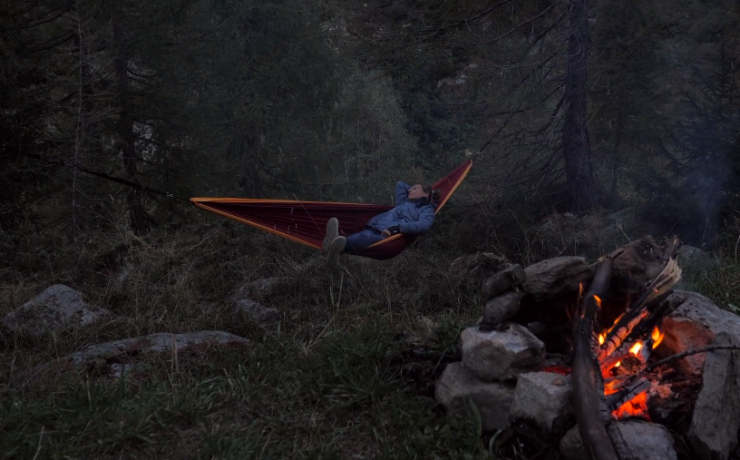
12. Stay Warm
Staying warm is important for every type of camping that you do but some of the methods used to stay warm are unique to Hammock Camping. There are some similarities to tenting, for instance, you need to need to wear proper clothing.
For hammock camping, you can get an underquilt which is basically a down jacket that goes under the hammock to keep your back warm. There is also a top quilt that goes on top of you to keep your front warm.
Most times of the year a sleeping pad would probably do the trick. One complaint I have seen about using a sleeping pad is that some people will roll off of it. In that case, we recommend using the ENO Hotspot wings to compliment your sleeping pad.
13. Choose Good Anchors

When choosing an Anchor you really want to make sure that you are choosing something that can support your weight.
Most of the time people are using trees for anchors when they are camping. You want to select trees that are at least 6 inches in diameter. For most types of trees, this would be able to support your weight without issue. Make sure you use common sense and take a look at the trees. If you don’t think they will support your weight then do not use them as anchors.
If you’re using something else as an anchor when you’re hammock camping you’re going to need to make sure it is safe to use. Even hammock stands have risks from being assembled incorrectly or manufacturer errors.
This is another good reason to sit in your hammock before lying down.
14. Directional Tools
You are going to want to bring directional tools if you’re going hiking or camping in the woods and not at a campsite. Some examples of items that you can bring are a cell phone, GPS, a map, and compass.
It’s not hard to learn how to use a map and compass but if you bring one you should definitely know how to learn how. It is actually kind of useless to bring one if you don’t.
15. Sun Protection

In almost every place in the world, the sun can pose a danger to you at some time of the year. The sun can beat down on you all day and sunburn not only to your skin but also to your eyes and lips. It’s very important to make sure that you are prepared for the sun safety.
Some people may not realize but in the winter, \especially in places where there is snow, the sun can pose a real danger. This is because the sun reflects off of the snow which is similar to how the sun reflects off of the water.
Items to help protect you from the Sun include sunscreen sunglasses and lip chap. Make sure that your sunglasses have the proper UV protection and the sunscreen is the SPF that works for you. If I I suggest starting with SPF 30 if you don’t already know this information.
16. Know the Wildlife
Not only should you just know the animals but you should also know the plant and bugs that live in the area. If you get a rash it is good to know what could have possibly caused it so that you know how to treat it.
It is also good to know how your actions will impact on the environment. As I’ve said in many posts before, I support Leave No Trace camping whether using a hammock or a tent. If you must leave any sort of Trace just make sure it’s not harmful to the environment.
That’s All I’ve Got
Well, that is my list of 17 safety tips for hammock camping. I think it’s crucial that we do not underestimate the importance of staying safe when camping in a hammock or otherwise.
There are a lot of safety things to take into account when camping. Please let me know in the comments below what you think is the most important aspect of hammock camping.
I’m sure that there may be some good safety tips missing from my list that are important to somebody out there. If this is you and there is a safety tip that you think I forgot please let me know I’d love to hear it.

